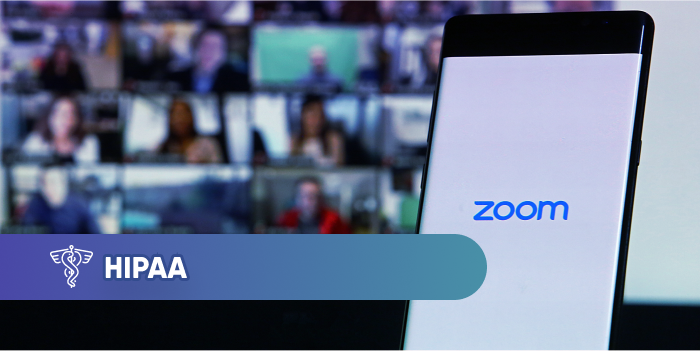Is Facebook Messenger HIPAA-Compliant? | Curogram Blog
Facebook Messenger, also known as Messenger, is one of the most popular instant messaging apps owned by Facebook that has evolved a lot over the...

Due to FaceTime’s popularity and widespread use, many healthcare providers are wondering if they can use it for virtual appointments with patients. FaceTime must be HIPAA compliant for healthcare providers to use it.
FaceTime is Apple’s proprietary app, primarily used for video calling, but audio calls are also an option. It’s available for iOS and macOS devices, so you can use it on a(n):
Even with the appeal FaceTime may have and its popularity, healthcare providers must adhere to HIPAA regulations.
It’s no surprise that healthcare providers want to use FaceTime for telehealth purposes. Three things that make it a tempting telemedicine solution are:
You won’t have to spend a dime on FaceTime if you own an Apple device since it’s included free. That might seem like a good thing because you save money on a monthly subscription, as telemedicine solutions often require. But, FaceTime may lose you a lot of money in the long run since it doesn’t offer the functionality of healthcare-specific telehealth platforms.
Most Apple device users are familiar with the app and have already “FaceTimed” at least once. You might believe that this familiarity reassures your patients and appeals to those less tech-savvy among them. But, using a consumer app such as FaceTime could make you appear less professional. It’s better to find a solution that is both professional and patient-friendly.
Mac and iOS device users know how easy it is to use FaceTime. You open the app, find the desired contact, and tap the video or audio call icon. That’s why your patients won’t have trouble using it, even the older ones.
The app still requires some setting up, though. That might be a bit difficult for your senior patients. Instead, find a solution that allows you to contact your patients without requiring them to set up an app at all.
FaceTime may be free and familiar, but it has many downsides when considering it for telemedicine use. And that’s before we break down whether it is HIPAA compliant or can be.
This is a major downside of FaceTime. You won’t have to worry about exchanging medical documents in a HIPAA-secure way because you can’t send any files at all. That means you have to use another platform for document exchange.
For example, if a doctor needs to share a patient’s lab results or any other kind of medical report during the appointment, they have to juggle between different communication channels. The same goes for patients.
If you want your online patient visits to be as efficient as your in-person visits, you have to replicate your workflows online.
During a patient’s in-person visit, a medical staff member checks them into their room, and the doctor comes in when the patient is ready. After the appointment, they check out with the medical staff and may receive a prescription, instructions, or necessary paperwork. They also pay for the appointment.
With FaceTime, it’s impossible to mimic this process. The doctor has no way of knowing when the patient is ready for the virtual visit. The medical staff would have to let the doctor know in one of the following ways:
That is impractical and can be frustrating for the patient and medical staff. Choosing a telemedicine platform with a virtual waiting room is the solution to this problem. In a virtual waiting room, doctors and staff can see which patients are waiting and when they are ready for the consultation. A proper telemedicine platform has a feature that allows healthcare providers collect payments and share sensitive documents securely to medical staff.
If more than two people have to be present during an appointment, that can be a problem with FaceTime. Some appointments require the presence of several medical personnel, and sometimes, doctors like to have assistants taking notes for them.
FaceTime allows for group video calls but not for all Apple devices. That imposes yet another restriction on what patients can have a virtual visit with you.
A massive issue with considering FaceTime for telemedicine is that some of your patients won’t own an Apple product. They may have an Android phone or PC computer. That would make them ineligible for telemedicine visits, or you would have to find a second platform to use for those patients.
This is undoubtedly a serious issue. Many patients will be left out, which may lead to patient and revenue loss. It may even result in a bunch of negative reviews for your practice, which damages your reputation.
Even with the disadvantages of FaceTime, if you’re still considering using it for telemedicine, you have to address the most significant issue: HIPAA compliance. Does FaceTime adhere to the HIPAA regulations, making it HIPAA compliant?
As a HIPAA-covered entity, if you need to communicate protected health information (PHI) for telemedicine purposes (when electronically, ePHI), the software or app you use must be HIPAA compliant, and the company that owns it your business associate (BA).
The BA needs to enter into a business associate agreement (BAA) with you. The contract guarantees that your HIPAA-defined responsibilities for protecting and securing ePHI transfer to your BA as well. In other words, the agreement guarantees that your BA adheres to HIPAA rules to protect sensitive patient data.
Apple doesn’t state anywhere that it would enter into a BAA for FaceTime with anyone. That may be because FaceTime is a consumer app; enterprise apps are different since they market to business entities rather than individuals.
FaceTime has end-to-end encryption, meaning only end-users of the app have access to it, and all data is secure during transit. That is one of the HIPAA requirements, but there’s also a rule that requires a BA to have access controls in place.
Once you set up FaceTime, there are no access and authentication controls. Anyone can open the app on your device since FaceTime does not require a password. HIPAA requires restricted access as a safeguard for PHI, so that makes FaceTime a non-HIPAA-compliant platform for telemedicine use.
Even if FaceTime satisfied all the HIPAA requirements and had the required safeguards in place, it still couldn’t be HIPAA-compliant if Apple is unwilling to sign a BAA.
Now that you know FaceTime is not HIPAA compliant, you need to find a telemedicine solution that meets all of the regulations while providing features that every healthcare practice requires.
FaceTime isn’t a telemedicine platform because it lacks HIPAA compliance and the features medical practice’s need. Curogram is a 100% HIPAA-compliant telemedicine platform that, by design, is for healthcare providers.
Some of the key features of Curogram include:
Additionally, you can exchange medical documents in an easy way that doesn’t compromise PHI. Curogram is a completely HIPAA-compliant telemedicine solution that can help you set up your virtual online clinic in no time. Request a demo today.
|
|
Curogram |
FaceTime |
|
EHR Integration |
Yes |
No |
|
Advanced Waiting Room Management Tools |
Yes |
No |
|
Secure Document Transfer |
Yes |
No |
|
In-Person Workflows |
Yes |
No |
|
Multi-Provider Appointments |
Yes |
No |
|
HIPAA Compliance |
Yes |
No |

Facebook Messenger, also known as Messenger, is one of the most popular instant messaging apps owned by Facebook that has evolved a lot over the...

GoToMeeting is a web-hosted app for virtual meetings by LogMeIn. You can use it for online meetings, video conferencing, voice calling, screen...

When it comes to web conferencing apps, Zoom is a favorite worldwide. It’s a cloud-based platform that allows for multiple people to participate in a...